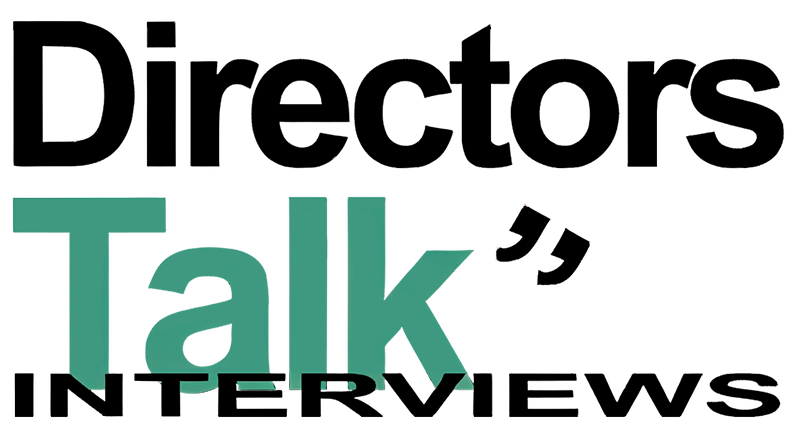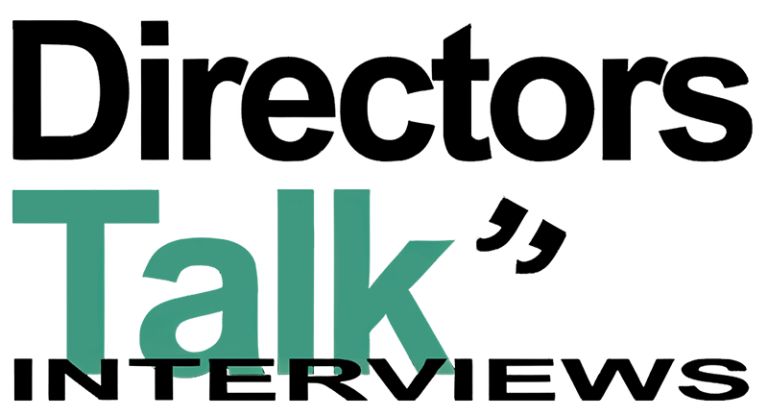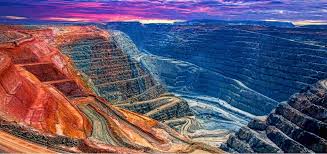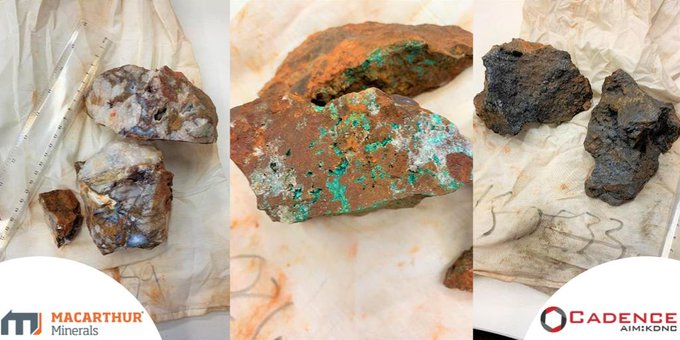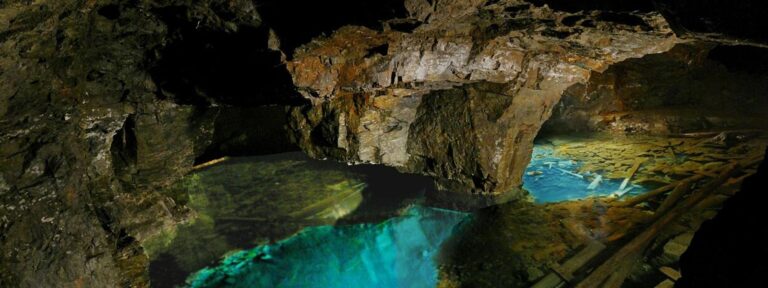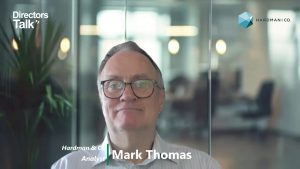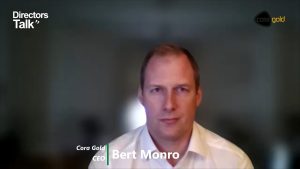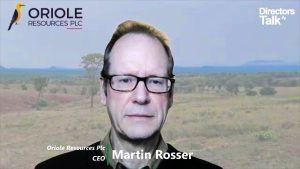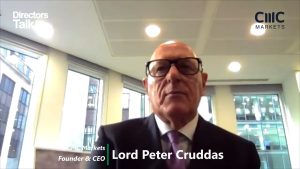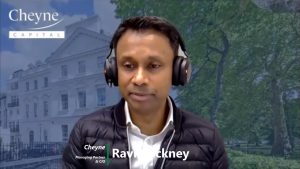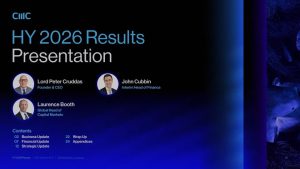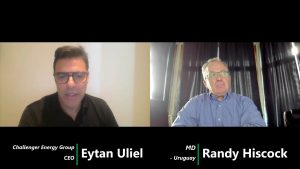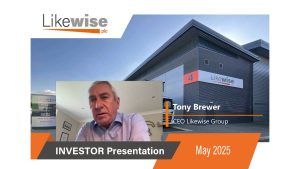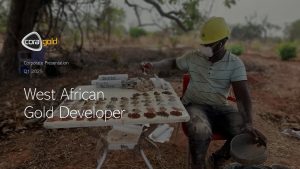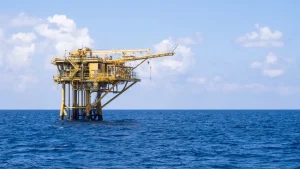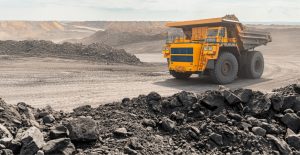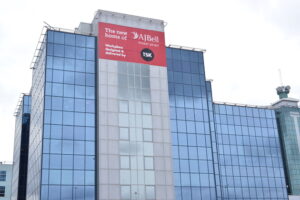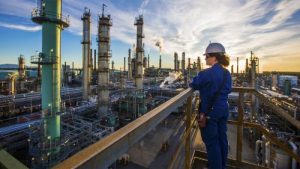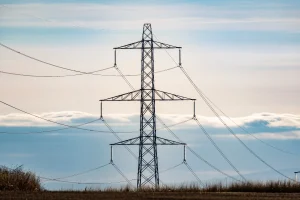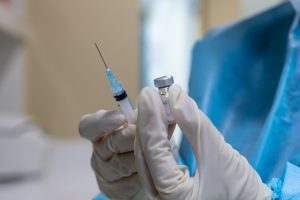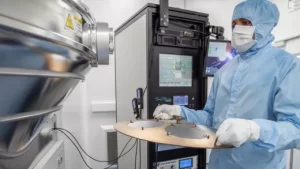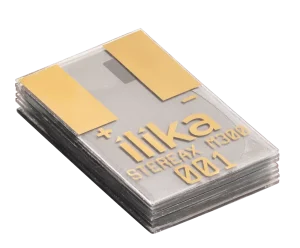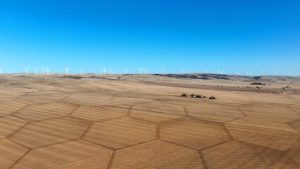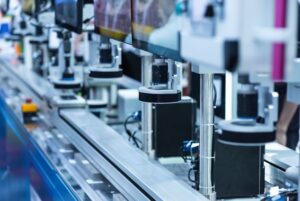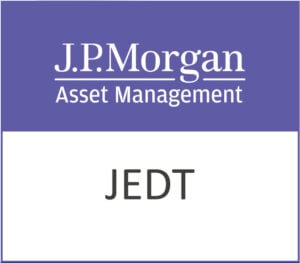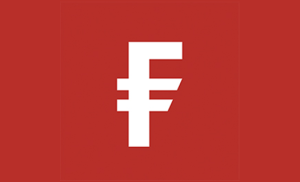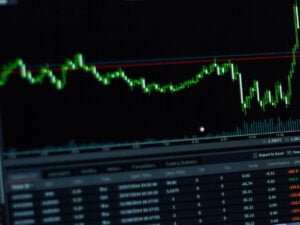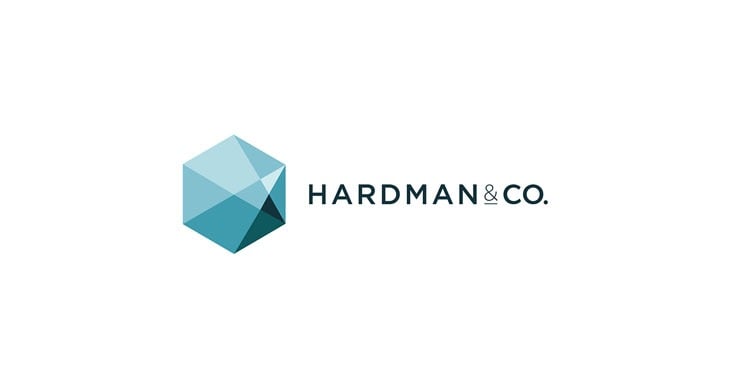Cadence Minerals plc (LON/NEX: KDNC; OTC: KDNCY) has announced its final results for the year ended 31 December 2019. A copy of the full results will be made available on the Company’s website from today at https://www.cadenceminerals.com/
CHAIRMAN’S STATEMENT
For the year ended 31 December 2019
___________________________________________________________________________________
First and foremost our thoughts are with families and friends, shareholders and investors during this shape-shifting pandemic. The Board and I hope all have found comfort and safety, well being and support during these extraordinary and unprecedented times.
There is no doubt that such turbulent conditions have created major disruptions and dislocations. However the Board has been well prepared and ready. I thank my fellow Board members for this dynamism and effort. Cadence Minerals staff and management have been used to working remotely and via phone/ video conference and quickly adapted to this new challenge.
The Board has continued its driven agenda to proceed with the support for portfolio companies whilst at the same time progress with the main target of the Amapá iron ore project in Brazil.
To this effect and to highlight a few of the achievement by our portfolio companies I would like, with the Board to offer congratulations to MacArthur Minerals on the successful conclusion of its convertible note, the life of mine Off -take agreement with Glencore and the successful listing on the Australian Stock Exchange. These are noticeable achievements for the company and combined with the ongoing successful drilling campaigns at Lake Giles bodes well.
Further European Metal Holdings successfully concluded a lengthy negotiation with the Czech utility company CEZ. This will allow EMH to complete many of its strategic goals and to become one of Europe’s largest and lowest cost lithium producers.
Hastings Technology are JV partner in the Yangibana Rare Earths project also concluded and completed a negotiation with the German based Schaffler Group that will enable the company to pursue its targets.
The Board hope that the next few years will witness a significant harvest as projects progress to operation and revenue, and previously identified opportunities realise higher valuations. All management companies of the portfolio companies within Cadence are wished the best of success.
The recent economic contraction has been severe and turbulent. However our investments have always been based on long-term assumptions and not the idiosyncrasies of the market. There is significant hope that recently announced global stimulus measures will lead to a re opening and recovery sooner than later. This will contribute to a significant appreciation in the company’s portfolio and therefore revenue and shareholder return.
Cadence’s focus on iron ore opportunities appears particularly timely. The stimulus measures specifically relate to infrastructure which benefits Steel demand which by derivative benefits Iron Ore consumption. Argus publications have reported April and May 2020 China steel production higher than that in 2019 and have predicted that China will produce over 1 billion tons of Steel in 2020. This will require more Iron Ore globally and should support the long term Iron Ore price.
China have announced over $140 billion in provincial bonds with increasing government incentives in real estate and infrastructure, which account for over fifty percent of Chinese domestic Steel demand. It is clear that steel production and therefore Iron Ore demand is at the front and center of global stimulus policy.
A rapid global supply response to higher iron ore prices and steel demand has some serious headwinds and constraints. The tragic events at Vales Brumadinho operations and the higher capital costs of new projects represent such challenges. Economic and political struggles combined with higher governance and regulation means operational consistency and good fortune is required to continue to supply the insatiable Steel demand.
Cadence has focused enormous efforts on the Amapá iron ore project. It is immensely pleasing for the board that significant milestones and hurdles were recently achieved, all whilst the global economy was on ” pause” Cadence and its partners, lawyers and consultants all maintained dialogue and pressure to focus on the process to achieve significant results. This will initially result in the movement of of iron ore currently stockpiled and ultimately in the rehabilitation of the Amapá system. As the opportunity progresses the Board is cognizant of the need for sustainability at all levels of the opportunity. The performance and Governance metrics that will be required to re habilitate the mine; port and rail will be stringent and strict.
Cadence has proven its ability to be flexible, opportunistic and survive and thrive. The Board feels the underlying conditions are developing to optimise the portfolio.
I would like to personally thank all Cadence’s management, fellow board members, staff ,consultants, partners and of course all Shareholders for their support and confidence in the Company.
Andrew Suckling
Non Executive Chairman
25 June 2020
CADENCE MINERALS PLC
STRATEGIC REPORT
For the year ended 31 December 2019
___________________________________________________________________________________
CHIEF EXECUTIVE OFFICER’S REVIEW
Cadence’s investment portfolio has advanced significantly over the year. The focus of our efforts has been the advancement of the Amapá iron ore project and we have spent most of our human and investment capital there.
In addition, given the capital constraints we continue to see within the equity and debt markets our view is that early stage exploration assets will have a difficult time raising sufficient capital to progress up the development curve, therefore we have sought to retain, where possible, the investments which have the highest probability of attracting capital and entering production and disposed or ceased further investment of those that do not.
This has meant that our portfolio in now focused on assets that are at the scoping study to pre-construction stage of development. Along with the relatively advanced nature of these projects we believe that they have the right cost structure and scale to deliver a substantial return to Cadence.
As mentioned above most of our efforts has been focused on the Amapá iron ore project in Brazil (“Amapá Project”). The terms of our investment were finalised in June 2019, which meant Cadence could earn in up to 27% (for US$ 6 million) in the project. In addition to the above we have a first right of refusal to increase our percentage up to 49%.
Prior to its sale in 2012 Anglo American valued its 70% stake in the Amapá Project at US$866 million (100% 1.2 billion) and after impairment at US$462m in its 2012 Annual Report (100% US$600m) and during its operation the mine generated an annual operating profit of up to U$171 million (100%).
During the remaining of the year along with our partners we progressed the development of the asset through the legal process and achieved some significant milestones and importantly subsequent to the year end the owner of the Amapá Project was granted authority to commence shipment of iron ore stockpiles situated at the wholly-owned port in Santana, Amapá, Brazil.
As we have mentioned on numerous occasions, the opportunity to be able to invest in such a project is rare within in our industry and we believe this project provides us with a potentially transformative asset for Cadence. The Amapá project gives the Company the potential for an exceptional return on investment in the run-up to full production and an opportunity to become a significant shareholder in a mid-tier iron ore producer.
Elsewhere in our investment portfolio, of note was the progress made by European Metals Holdings, which completed its preliminary feasibility study that through process optimisations and the production of lithium hydroxide saw an increase in NPV to in excess of USD 1 billion dollars. Most importantly, it shows a globally competitive cost of $3,435/t per tonne of lithium hydroxide. In addition and subsequent to the year end European Metals Holdings secured and completed an investment from CEZ a.s. of EUR 29.1 million for a 51% equity interest in Geomet, the Company’s Czech subsidiary and holder of the Cinovec licenses
Strategy
Cadences’ strategy has continued to evolve and as stated above, given the current dearth of capital of early exploration projects, the Company has focused on assets that are in the more advanced stages of development, which are therefore more likely to reach production and deliver returns to Cadence. Even so the risk associated with investing in any resource projects at these stages is still relatively high as assets are more sensitive to external risks, such as financing and regulatory. Therefore, and to mitigate these risks, our goal from the outset is to obtain a deep fundamental understanding of the asset, its potential economics, operating and legal environment and its management team.
By doing so, we can eliminate many of the potential investments that we review during the year and fund projects that we believe will deliver value to our shareholders. We look to fund projects via earning in, at solely our option, and if possible, look to incentivise our joint venture partners via equity in Cadence against deliverables that will add value. Importantly we also take an active approach to our investments by being part of the management team and enshrining our minority shareholder protections in joint venture agreements.
Outlook
At the time of writing all our major investments are progressing well. We will continue to review our investments in our investee companies, with regular meetings with management. Assuming we can complete our investment in the Amapá Project, the coming year will be focused on developing this asset, which if successful has the potential to deliver substantial value to Cadence.
MARKET REVIEW
Lithium
During 2019 approximately 315,000 tonnes of lithium carbonate equivalend was consumed, up from 261,000 tonnes consumed in 2018. This increase were mainly driven by the increasing sales of electric vehicles in USA and Europe. Nonetheless during 2019, battery-grade lithium prices in China softened throughout the year to US$8,750per tonne by year end, this was due to the oversupply of spodumene concentrates form expansions or new operations in Australia.
This reduction in pricing has resulted in significant reductions in supply from the high costs Australian spodumene producers. Therefore with the higher cost producers, in part, exiting the market the current consesnsus indicate higher prices in the medium to long term and in November 2019, Canaccord estimated battery-grade lithium carbonate at US$13,000 per tonne by 2026 with long-term price of US$15,000. The evidence this year only further supports our investments in European Metals Holdings and our Joint Venture with Bacanora Minerals both of which are developing fully intergrated lithium projects that produce final EV grade lithium products at a much lower cost than low-grade intermediate concentrate.
In terms of the primary terminal market of the lithium products China produced 1.2 million EV’s and Tesla produced circa 365,000vehicles in 2019. The German automotive manufacturers led by Volkswagen continue to aim for 50% EV production by 2025. Advances in battery and automotive design to make mass-market EVs cost competitive are now on the near horizon, which could be the tipping point for the lithium market. Market commentators are forecasting lithium carbonate equivalent demand of approximately 1 million tonnes per annum by 2025, this equates to more than 20 new mines with an average capacity of 25,000tonnes per annum to be commissioned within the next 5 years to meet demand.
Iron Ore
The iron ore market has experienced dramatic events in the last year. The tragedy caused by the failure of the Brumadinho tailings dam has led to extensive closures of production in Brazil which are likley to continue for the foreseeable future. In addition, earlier this year Australia experienced a cyclone that resulted in a reduction of iron ore exports of approximately 14 million tons in the first quarter of 2019 and caused a meaningful reduction in supply of benchmark iron ore product.
The crackdown by the Chinese government on th level of pollution resulting from domestic steel production plant has caused a change in the purchasing behaviour ofthe iron ore market’s biggest consumer.This has led to a substantial increase in prices of high quality iron ore products, with high iron content itself (improving yield in a steel plant) and lower impurity levels, requiring less coking coal and having a significantly reduced environmental impact.The scale of the price premiums being paid for these high quality iron ore products has significantly exceeded market expectations. This underlines the importance of projects with ores capable of producing premium products like the Amapá Project.
INVESTMENT REVIEW
Amapa Iron Ore Project
In June this year Cadence entered into a binding investment agreement to invest in and acquire up to a 27% interest in the former Anglo American plc and Cliffs Natural Resources Amapá iron ore mine, beneficiation plant, railway and private port owned by DEV Mineração S.A.. The Agreement also gave Cadence a first right of refusal to increase its stake to 49%. Further details of The Agreement can be found in later sections of this investment review.
The Amapá Project is a large-scale iron open pit ore mine with associated rail, port and beneficiation facilities which commenced operations in December 2007. Production increased to 4.8 Mt and 6.1 Mt of iron ore concentrate product in 2011 and 2012 respectively. Before its sale in 2012 Anglo American valued its 70% stake in the Amapá Project at US $462m ( 100% US $600m).
To acquire its 27% interest Cadence will invest US$ 6 million over two stages in a joint venture company. The first stage is for 20% of the JV the consideration for which is US$2.5 million. The second stage of investment is for a further 7% of JV for a consideration of US$3.5 million. The investments are wholly contingnet on DEV delivering several key preconditions.
For the first stage of investment the primary precondtions were the creditor approval of the judicial restructuring plan (“JRP”), the reinstatement of the the railway licenses and reaching a settlement agreement with the secured bank creditors (“Bank Creditors”). DEV working alongside Cadence and its joint venture partner Indo Sino Pty. Ltd. (“Indo Sino”) managed to satisfy the first two preconditions in August and December 2019 respectively. A settelment with the Bank Creditors is the key precondition that still remains outstanding. Negotiations are still ongoing with the Bank Creditors and we hope to achieve a settlement as quickly as possible.
Once this precondition has been met, Cadence will release its monies held in escrow (~US$2.5 m) at which point Cadence will become a 20% shareholder in the Amapá Project via our joint venture company which will own 99.9% of DEV.
The second tranche of investment, increasing Cadence’s interest to 27% for US$3.5 million, is contingent on the DEV getting all the key environmental and operational licenses reinstated.
Subsequent to the year end and while negotiaitons with the Banks Creditors have been ongoing DEV filed a petition, which amongst other requests, asked for permission to start the export of US$10 million of iron ore (net of costs) from the 1.39 million tonnes held in stockpile at the DEV’s port in Santana, Amapá, Brazil. This was granted in April 2020. at the time of writing transport of the the material from DEV’s port to the public port has begun and DEV expects to be able to start shipping in early Q3 2020.
The net proceeds of the sale of the iron ore, are to be used to pay historic small and employee creditors (~US$2.5 m). Thereafter funds will be used to begin recommissioning studies on the asset including plant, railway and port and to start maintenance and monitoring of the current tailing dam facilities (~ US$ 6 m). Lastly the remaining (~ US$ 1.5 m) will be used to provide ongoing working capital and a payment held in escorw until a settlement is reached with the Bank Creditors.
DEV also filed a further petition, its primary request was that the Commercial Court of São Paulo (“Court”) remove the secured bank creditors liens (“Bank Liens”) over DEV and its assets. The Court has asked the Bank Creditors to reach an ageement with DEV, Cadence and Indo Sino or enforce its security. In the absence of an agreement the Court may rule on the removal or annulment of the Bank Liens and consider the Bank Creditors as unsecured.
The Amapá Project and Current Planned Development
As part of its due diligence and assessment Cadence has carried out multiple site visits and commissioned SRK Consulting to provide it with a high-level review of the Amapá Project. This review was based on a site visit, historical analysis and the review of technical independent engineers reports published 2013 and 2015. It should be noted that this review provides a basis for a preliminary assessment of the project and its potential but further, more detailed reviews and analysis would be required to provide a Pre-Feasibility or Feasibility Study level report. This would include amongst other things, providing a current Mineral Resource Estimate and/or Ore Reserves, updated capital and operating costs and an independent assessment of key economic drivers and returns.
The Amapá Project consists of an open pit iron ore mine, railway and port facility and is located in Amapá State, northeast Brazil. The Amapá mine site, forming part of the Amapá Project, is located near the towns of Pedra Branca do Amapári, and Serra do Navio, approximately 200km northwest of Macapa.
In 2012 the operation produced 6.1 Mt of iron ore concentrate and reported operating profits from their 70% ownership in the Amapá Project of US$120 million (100% – US$171 million). Before its sale in 2012, Anglo American valued its 70% stake at US$462m in its 2012 Annual Report (100% – US$600m).
· During its operation, the mine generated an annual operating profit of up to U$171 million (100%)
· The total historic mineral resource contains an estimated 348 million tonnes (“Mt”) of ore @ 38.9% iron content (“Fe”)
· The ore is beneficiated to 65% Fe Pellet Feed and 62% Fe Spiral Concentrate
· Based on available historic mine plans and an independent consultant review it is expected that at full production the Amapá Project has a mine life of 14 years and at full capacity is targeting to produce up to 5.3 Mt of Iron Ore per annum
The Amapá Project has minerals rights over 5,556 hectares comprising three separate mining licenses and an exploration permit. The historic Mineral Resource contained within the licenses is of some 348 Mt at 38.9% Fe.
It should be noted that the Minerals Resource was assessed by Anglo American as at the 31 December 2012 (Annual Report 2012, Anglo American, p.198) and was prepared under the Australasian Code for Reporting of Exploration Resources and Ore Reserves 2004 edition (“JORC”). Given the passage of time and the depletion of this resource bewtween 2012 and 2013 this assessment is not valid under JORC. Further work and assessment would need to be undertaken to assess and update any current Mineral Resource or Ore Reserve.
Based on available historic mine plans and the independent engineers review DEV’s current mine plan envisages a mine life of 14 years. Management estimate prior to the start of mining the Amapá Project will also ship the iron ore stockpiles held at the dock which is estimated to start early in Q3 2020 year and continue for upto two years . The mine is open pit and has a planned strip ratio of 0.9:1.
The beneficiation plant consists of a crushing circuit followed by screening, flotation, thickener and filtering to produce 65% Fe Pellet Feed in addition the plant produces a 62% Fe Spiral Concentrate. The current mine plan would mean that the Amapá Project would produce at steady state production an estimated 4.4 Mt of 65% Fe and 0.9 Mt of 62% Fe per annum.
As part of the JRP approved by creditor in August 2019, DEV submitted a operational and financial plan, that DEV intends to implement to bring the the Amapá Project back into production.
The information, assumptions and financial model, were prepared for the JRP only and are based on historical analysis of the costs and the review of two technical independent engineers reports published 2013 and 2015. It should be noted that this review provides a basis for a preliminary assessment.
The key stages of the current redevelopment strategy are summarised below:
Recommissioning Studies
· DEV will start the relevant resource, engineering studies required for banking finance of the project.
· It is anticipated that this will commend in the third quarter of 2020 with completion in the third or fourth quarter of 2021.
· The commissioning of these studies will commence only after the commencement of the shipment of iron ore from the stockpile owned by DEV.
Reinvestment of Iron Ore Stockpile Sales.
· It is anticpated that DEV will begin shipping of the iron ore at stockpilen in early Q3 2020 and will take upto to 2 years to ship. This will initially be US$10 million of iron ore (net of costs).
· ·An independent survey of these stockpiles indicates some 1.39 Mt (+/- 10%) of iron ore in three stockpiles with an average Fe grade of 62.12% (+/ 10%)
· These funds are intend be reinvested in the capital development of the Amapá Project, however they could also be used in part as part of a settlement package with the Bank Creditors.
Capital Investment
· ·DEV’s estimates of capital costs, which are based on 2013 engineering studies, is anticipated to be a total of US$168 million. This sum includes all the capital investment required to bring the mine, rail and port into full production.
· The above capital investment will occur after the completion of the recommissioning studies and raising additional capital.
· The reconstruction is estimated to take approximately 18 months, which based on current estimates would mean the start of full operations in the first or second quarter of 2022.
Operational Plan
· Based on available historical mine plans and the independent engineers review DEV’s current mine plan envisages a mine life of 14 years.
· As mentioned above before the start of mining, the Amapá Project will also ship the iron ore stockpiles held at the dock in earrly Q3 2020 continue for upto 24 months.
· ·The mine is open pit and has a planned strip ratio of 0.9:1. The beneficiation plant consists of a crushing circuit followed by screening, flotation, thickener and filtering to produce a 65% Fe Pellet Feed and a 62% Fe Spiral Concentrate.
· ·The current mine plan would mean that the Amapá Project would produce at steady-state production an estimated 4.4 Mt of 65% Fe and 0.9 Mt of 62% Fe per annum. Currently steady-state production is expected to be reached in 2024.
· The intention is that these products would then be transported from the mine to the railhead by on-highway trucks along an unpaved road, a road haul distance of 13km. From the railhead, the products would then be transported 180km by rail to the port facility at Santana.
· The products would then be stockpiled at the port facility and mechanically loaded onto “Handymax” vessels which navigate the Amazon River out to sea and then transhipped onto larger “Capesize” vessels before the products are sold to the market. The products produced by the Amapá Project are well known in the market, especially in China where most of the historical production was sold.
Cadence is updating the operation and financial plan as part of a commisioned scoping study, which may mean a variation to the the above plan. As part of it scoping study Cadence will also update the financial plan that was previously presented in the JRP.
Details of the Agreement with Indo Sino
The Agreement with Indo Sino is to invest in and acquire up to a 27% of a joint venture company Pedra Branca Alliance Pte. Ltd. (“JV Co”). On approval of the JRP and satisfaction of the preconditions and the transfer of equity of DEV to the JV Co the JV Co will own 99.9% of the Amapá Project. Should Indo Sino seek further investors or an investment in the JV Co the agreement also provides Cadence with a first right of refusal to increase its stake to 49% in the JV Co.
To acquire its 27% interest Cadence will invest US$ 6 million over two stages in JV Co. The first stage is for 20% of the JV Co the consideration for which is US$2.5 million. These funds are already held in escrow awaitng the completion of the conditions precedent. If the frist conditions precendent are not met and the JRP is not succesful, the monies held in escrow monies will be returned to Cadence. The second stage of investment is for a further 7% of JV Co for a consideration of US$3.5 million. If Cadence is unable to complete the second stage of the investment or not exercise its right of first refusal under the terms of the Agreement, Indo Sino will have a twelve-month option to buy the shares in JV Co held by Cadence for 1.5 (1 ½) times the price paid by Cadence for such shares.
Cadence’s investments are conditional on several material pre-conditions. For the first stage of investment the remaining pre-condition remains the settlement with the Bank Creditors, and for stage two is Cadence’s investment is contingent on all the key environmental and operational licenses reinstated. Shoul the first stage of investment
On completion of Cadence’s investment (not including the first right of refusal) our joint venture partner Indo Sino will own 73% of JV Co. The Agreement also contains security and default clauses which if triggered causes an upwards adjustment mechanism to allow Cadence to either receive cash from JV Co or receive additional shares in JV Co. In the latter case Cadence’s shareholding in the JV Co will not go above 49.9%.
On completion of the US$ 6 million investment Cadence will have the right to appoint two members to a five-member board with the remaining three comprising of one member jointly appointed by Cadence and Indo Sino and two appointed by Indo Sino.
European Metals Holdings Limited
Cadence has has held an investment in European Metals since June 2015. As of year end, Cadence held approximately 18.01% in the Cinovec deposit in the Czech Republic through a direct holding in the share capital of European Metals that owns 100 per cent of the exploration rights to the Cinovec lithium/tin deposit.
Cinovec hosts a globally significant hard rock lithium deposit with a total Indicated Mineral Resource of 372.4Mt at 0.45% Li2O and 0.04% Sn and an Inferred Mineral Resource of 323.5Mt at 0.39% Li2O and 0.04% Sn containing a combined 7.18 million tonnes Lithium Carbonate Equivalent and 263kt of tin reported 28 November 2017. An initial Probable Ore Reserve of 34.5Mt at 0.65% Li2O and 0.09% Sn reported 4 July 2017 has been declared to cover the first 20 years mining at an output of 22,500tpa of lithium carbonate reported 11 July 2018.
Summary of Activities
It has been a significant year for European Metals both from the perspective of project and corporate development.
In project development terms it was a a significant year. In June 2019 European Metals completed an updated Preliminary Feasibility Study (“PFS”), conducted by specialist independent consultants.
The PFS indicated a return post tax NPV of USD1.108B and an IRR of 28.8% and confirmed that the Cinovec project is a potential low operating cost, producer of battery grade lithium hydroxide or battery grade lithium carbonate as markets demand. It confirmed the deposit is amenable to bulk underground mining. Metallurgical test-work has produced both battery grade lithium hydroxide and battery grade lithium carbonate in addition to high-grade tin concentrate at excellent recoveries. Cinovec is centrally located for European end-users and is well serviced by infrastructure, with a sealed road adjacent to the deposit, rail lines located 5 km north and 8 km south of the deposit and an active 22 kV transmission line running to the historic mine. As the deposit lies in an active mining region, it has strong community support.
In terms of corporate development, the most significant was the partnership with CEZ Group, one of Europe’s largest power utilities. Headquartered in the Czech Republic, CEZ is an established, integrated energy group with operations in a number of Central and Southeastern European countries and Turkey. CEZ’s core business is the generation, distribution, trade in, and sales of electricity and heat, trade in and sales of natural gas, and coal extraction. CEZ Group has 31,400 employees and annual revenue of approximately AUD 12 billion. The largest shareholder of its parent company, CEZ a. s., is the Ministry of Finance of the Czech Republic with a stake of approximately 70%. The shares of CEZ a.s. are traded on the Prague and Warsaw stock exchanges and included in the PX and WIGCEE exchange indices. As one of the leading Central European power companies, CEZ intends to develop energy storage projects in the Czech Republic and in Central Europe which include energy storage and charging infrastructure and electricity supply, for users of electric vehicles.
This partnership was completed subsequent to the year end and the terms are summarised below.
· Pursuant to the Exclusivity and Framework Agreement, CEZ has subscribed through SDAS for such number of Geomet Shares as will result in SDAS holding Geomet Shares comprising fifty-one per cent (51%) of the ownership interests and voting rights in Geomet, attached with the right to receive fifty-one per cent (51%) of dividends, liquidation balance and other proceeds payable by Geomet to Geomet Shareholders following completion of the subscription.
· The amount paid by CEZ to Geomet under the option is in total approximately €34.06m, equivalent (at the time of signing) to approximately £29.15m. This compares to EMH’s market valuation (at the time of signing) of approximately £32.88m (€38.42m). The amounts in GBP and AUD included above have been calculated using an average exchange rate for EUR/GBP and EUR/AUD respectively as at 18 November 2019.
Macarthur Minerals Limited
Macarthur is an iron ore development, gold and lithium exploration company and is listed on the TSX Venture Exchange (TSX-V: MMS) and Australian Stock Exchange (ASX: MIO). Macarthur is focused on bringing to production its 100% owned Western Australia iron ore projects. The Lake Giles Iron Project includes the 80 million tonne Ularring hematite resource (approved for development) and the 710 million tonne Moonshine magnetite resource. As of year end, Cadence held approximately 7.21% of Macarthur.
Macarthur has secured a binding Life-of-Mine Off-Take Agreement with Glencore International A.G. and is focused on commercialising its iron ore projects utilising mining, processing and logistics infrastructure in the region and is progressing towards completing a bankable feasibility study.
Macarthur also has established multiple project areas in the Pilbara, Western Australia for conglomerate gold, hard rock greenstone gold, hard rock lithium and nickel. Macarthur Minerals also has significant lithium brine placer claims in the Railroad Valley, Nevada, USA.
Summary of Principle Activities
During the year Macarthur has progressed well across its key assets, some of which are highlighted below.
· Macarthur completed a US$6 million institutional convertible note offer to fund the production of a Bankable Feasibility Study on the Company’s iron ore projects. Glencore Internation A.G participated in the convertible note.
· Macarthur signed a binding Life-Of-MineOff-Take Agreement with Glencore International A.G for the Lake Giles Iron Ore Project.
· The Lake Giles Iron Project, Feasibility Study (FS), is well underway with the infill drilling program completed in December 2019.
· Macarthur entered into a binding agreement with Arrow Minerals Limited (Arrow) to acquire the rights to a substantial package of land covering approximately 4,950 ha adjacent to the Moonshine Magnetite deposit. The tenure will be used for constructing supporting infrastructure including the, processing plant, camp, airstrip, waste rocks dumps and a tailings storage facility. The deal with Arrow also paves the way forward to obtain access to tenure to construct a private haul road from the project through to the open access Perth to Kalgoorlie railway owned by Arc Infrastructure.
· A drilling program was completed at the Hillside project in the Pilbara region of Western Australia to test potential supergene and hypogene mineralisation above and below the water table along the majority of a 14-kilometre Gossan line where previous rock chip sampling identified anomalous copper. This program also tested outcropping quartz vein mineralisation identified through prospecting activities.
· Filing of the Preliminary Economic Assessment NI43-101 Technical Report, for a combined hematite and magnetite project (the Lakes Giles Iron Project).This re-evaluationresulted in:oa reduction in the operational costs for the hematite product;orationalisation and reduction inCapital Cost fordevelopmentof a combined magnetite and hematite project;andorevised logistics transport solutions and costs
· Engineering firm Engenium commissioned to revise NI 43-101compliant technical reportand refine operating and capital costs of thehematite and magnetite projects
· Repositioning of Macarthur’s portfolio of highly prospective lithium and goldprojects in the Pilbara region of Western Australia through an earn-in Joint Venture Agreement with Australian listed exploration company Fe Limited (ASX: FEL)
Sonora Lithium Project
Cadence, holds an interest in the Sonora Lithium Project via a 30% stake in the joint venture interests in each of Mexalit S.A. de CV and Megalit S.A. de CV. Mexalit forms part of the Sonora Lithium Project.The remainder of Mexalit and Sonora Lithium Project is owned by Bacanora Lithium Plc which is a London-listed lithium asset developer and explorer (LON: BCN).
The Sonora Lithium Project consists of ten contiguous concessions covering 97,389 hectares. Two of the concessions (La Ventana, La Ventana 1) are owned 100% by Bacanora through its wholly-owned subsidiary Minera Sonora Borax S.A de C.V.. El Sauz, El Sauz 1, El Sauz 2, Fleur and Fleur 1 concessions are owned by, Mexilit S.A. de C.V. (which is owned 70% by Bacanora and 30% by Cadence). These concessions are located approximately 190 kilometres northeast of the city of Hermosillo, in Sonora State, Mexico. They are roughly 170 kilometres south of the border with Arizona, USA. The San Gabriel and Buenavista concessions are owned by Minera Megalit S.A. de C.V. (which is owned 70% by Bacanora and 30% by Cadence). The asset has Measured plus Indicated Mineral Resource estimate of over 5 million tonnes (comprising 1.9 Mt of Measured Resources and 3.1Mt of Indicated Resources) of lithium carbonate equivalent and an additional Inferred Mineral Resource of 3.7 Mt of LCE, Sonora is regarded as one of the world’s larger known clay lithium deposits.
A feasibility study report was publisehd in Janury2018, which confirmed the positive economics and favourable operating costs of a 35,000 tonnes per annum battery grade lithium carbonate operation. The feasibility study report estimates a pre-tax project Net Present Value of US$1.253 billion at an 8% discount rate and an Internal Rate of Return of 26.1%, and Life of Mine operating costs of US$3,910/t of lithium carbonate.The full report can be found here:
https://www.bacanoralithium.com/pdfs/Bacanora-FS-Technical-Report-25-01-2018.pdf
It should be noted that under the published feasibility study the concession owned by Mexalit will be mined starting in year 9 of the mine plan cease at the end of the mine like in year 19.
Summary of Principle Activities
Bacanora progressed in securing the financing package for project construction which included;
· Investment and Offtake Agreement with Ganfeng LithiumCo., Ltd. (“Ganfeng”), Ganfeng acquired 29.99% of Bacanora and 22.5% of Sonora Lithium Ltd(“SLL”), the holding company for the Sonora Lithium Project. This investment did not dilute our position in Mexalit.
· they continued to work to complete the front-end engineering design throughout the period.
· In November 2019, Bacanora raised £7.7 million via a placing of ordinary shares
· Bacanora retains its US$150 million conditional senior debt facility with RK Mine Finance, signed in July 2018,to finance the development of the Sonora Lithium Project. US$125 million remains to be drawn.
In addition Bacanora continued with the front end engineering design during the year.
Yangibana Project, Australia
Cadence owns 30% of the Yangibana, Yangibana North, Gossan, Hook, Kanes Gossan and Lions Ear Rare Earth Deposits, which form part of the Yangibana Rare Earth Deposit (“Yangibana Project”). Hastings Technology Metals owns the remaining 70% (“Hastings”). The updated resource ore statement can be found on the Yangibana Mineral Resource & Ore Reserve statement from 4th November 2019
http://irservices.netbuilder.com/ir/cadence/newsArticle.php?ST=REM&id=2953668.
The exploration costs until the commencement of the BFS are borne solely by Hastings (70% owners and operator).
Summary of Principle Activities
Hastings has continued to make steady progress on the development of the the Yangibana Project. In November 2017 Hastings reported the successful completion of a Definitive Feasibility Study (DFS) for the Yangibana Project based on the production of Mixed Rare Earths Carbonate (MREC) rich in Neodymium (Nd) and Praseodymium (Pr), critical materials used in the manufacture of permanent magnets. As summary of the DFS can be found here:
The current mine plan anticipates production to start from our joint venture areas (Yangibana and Yangibana North) in year 5 and continue to the end of mine life. In the twelve months following completion of the DFS, Hastings confirmed capital requirements, completed flotations pilotplant studies, and testing hydrometallurgical equipment for suitable duty capacity.
Hastings then completed a 100kg/hr pilot processing circuit test, operating 24 hours per day continuously over 8 days at ALS Metallurgy in Balcatta, Western Australia. The flowsheet consisted of milling, rougher flotation, regrind and cleaner flotation stages. The flotation circuit selectively concentrated the rare earths-bearing mineral monazite into a final product whilst discarding 95% of the original rock waste mass. Flotation process design was reconfirmed, as the performance output of the pilot plant improved over the course of the 8 days.
On the back of the updated resource a new mining reserve estimate was undertaken by a Mining Consultancy Group (Snowden) based on Measured and Indicated Mineral Resources at each of Bald Hill, Fraser’s, Auer, Auer North, Yangibana (Cadence 30%), Yangibana West and Yangibana North (Cadence 30%) deposits. The updated reserve estimate remains surface mining focussed
Ore Reserves tonnages from the new estimate increased by 34% to 10.35 million tonnes at 1.22%TREO including 0.43%Nd2O3+Pr6O11. The updated Ore Reserve extends mine life by 3 years, supporting a +10 year operational life for the Project.
Since the DFS the project NPV has decreased by 4% to $447 million due to capital cost increases as a result of the board mandated decision to source, where possible, only Tier 1 process plant equipment suppliers with the capabilities to provide unrivalled equipment performance guarantees and field support and backup including increasing its probable ore reserves by 34%, reviewing their capex requirements which was revised upwards ro AU$ 427 million.
Lithium Technologies Pty Ltd & Lithium Suppliers Pty Ltd (“LT” & “LS)
In December 2017 Cadence Minerals announced that it had executed binding investment agreements to acquire up to 100% of six prospective hard rock lithium assets in Argentina via LT & LS.
Although these projects are promising and our joint venture partners were able to identify several high prirority areas for exploration, we are still awaiting approval of the finalised exploration permits. Therefore we agreed to vary the binding agreement to acquire three prospective assets in Australia that are in regions with proven high-grade lithium mineralisation.
The acquisition covered three projects – Picasso (Western Australia – WA), Litchfield (Northern Territories – NT) and Alcoota (NT) all of which are in regions with proven lithium mineralisation and supportive mining infrastructure.
The variation resulted in LT & LS acquiring between them 100% of Synergy Prospecting Ltd (“Synergy”), which owns the three lithium projects in Australia. As two of Synergy’s assets are granted, Cadence agreed to move forward with increasing is ownership in LT & LS from 4% to 31.5% via:
· Issuing 373,544,298 million Cadence shares to the founding shareholders of LT & LS valued at £400,000 (based on 14-day VWAP of £0.0107) to acquire a further 20% stake, which is in line with the terms of the original agreements; and
· Invest £300,000 to earn an incremental 7.5% stake, with the funds earmarked to commence developing Synergy’s lithium assets in Australia.
The result of the variation would mean no change to the £ consideration to be paid for of LS and LT, however additional shares would be issued as a result of the change in the share price in Cadence between November 2017 and March 2019.
As of the date of this document, Cadence owns 25.875% of LT & LS and consequently of the Australian and Argentinian lithium prospects.
During the year our joint venture partners carried out initial exploration work including mapping and chip sampling. Although these results were encouraging, we to focused our investment in the Amapá Project which is of a lower risk profile than the LT and LS investment.
Other Investments
As stated within our strategy earlier in the Annual Report & Accounts, Cadence has focused its investments on assets that are in the more advanced stages of development. This was driven by Cadence’s assessment that early exploration project will in general find it difficult to source capital in the medium to long term, and therefore are not very likley to deliver the retunrs we would expect. As such we have either during the reportign period or soon after disposed of our equity holdings in Auroch Minerals Ltd and Clancy Exploration Limited. These funds were utlised either to fund the the Amapá Project, pay down our loan note or for working capital purposes. In addition given the above, we also did not renew our exploration license for our Greenland Rare Earth Project, as retaining them would involve a considerable commitment in license fees over the coming years.
FINANCIAL REVIEW
Total comprehensive loss for the year attributable to equity holders was £2.04m loss (2018: £11.92m). This decrease in loss from the previous year of approximately £9.88m is mainly due to the movement in realised and unrealised profits and losses of approximately £9.73m relating to our share investment portfolio (available for resale assets) held during the period.
Diluted loss per share was 2.466p (2018 : 14.469p).
The net assets of the Group at the end of period was £15.40 million (2018: £14.40 million). This increase of approximately £1m was mainly driven by the reduction in value of available for resale assets during the period.
Kiran Morzaria
Chief Executive Officer
25 June 2020
